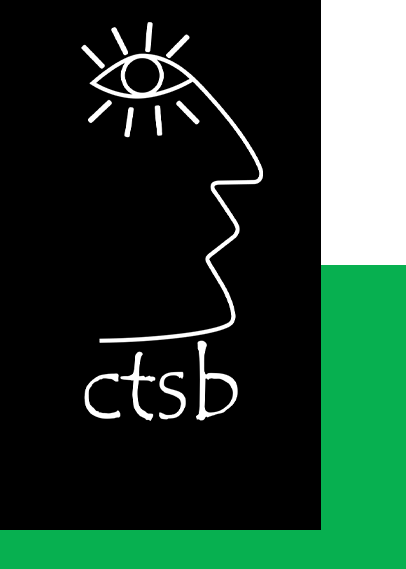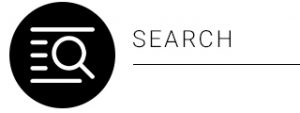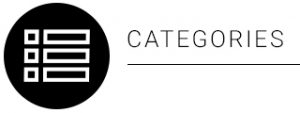USE LANGUAGE AND COMMUNICATION IN OCCUPATIONAL
LEARNING PROGRAMMES, US 119467/8973,
NQF LEVEL: 3, CREDITS: 5
NOTIONAL HOURS: 50
SAQA UNIT STANDARD ALIGNMENT
SPECIFIC OUTCOMES (SO)
Level 3 | Credit 5
UNIT STANDARD 119467/8973 :
Present information in report format.
SPECIFIC OUTCOME 1
On completion of this section you will be able to access and use available learning resources.
ASSESSMENT CRITERIA
- Relevant learning resources are identified. (SO 1, AC 1)
- Learning resources are used effectively through appropriate selection of information and acknowledgement of sources. (SO 1, AC 2)
SPECIFIC OUTCOME 2
On completion of this section you will be able to use learning strategies.
ASSESSMENT CRITERIA
- Information is summarized and used for learning purposes. (SO 2, AC 1)
- Specific techniques are selected and applied appropriately. (SO 2, AC 2)
- Relevant questions are asked. SO 2, AC 3)
- Texts are read/ viewed for detail, interpreted and analysed for a given context. (SO2, AC 4)
- Spoken/signed input is listened to/viewed for detail, interpreted and analysed for a given context. (SO 2, AC 5)
- Learning takes place through communicating with others in groups or as individuals. (SO 2, AC 6)
SPECIFIC OUTCOME 3
On completion of this section you will be able to manage occupational learning materials.
ASSESSMENT CRITERIA
- Occupational learning materials are organized for efficient use. (SO 3, AC 1)
- Layout and presentation of learning materials are understood and used effectively. (SO 3, AC 2)
- Technical language/ terminology are engaged with, and clarification sought if needed. (SO 3, AC 3)
SPECIFIC OUTCOME 4
On completion of this section you will be able to conduct basic research and analyse and present findings.
ASSESSMENT CRITERIA
- Appropriate or relevant topic and scope is identified and defined. (SO 4, AC 1)
- Research steps are planned and sequenced appropriately. (SO 4, AC 2)
- Research techniques are applied. (SO 4, AC 3)
- Information is evaluated for relevance. (SO 4, AC 4)
- Information is classified, categorized and sorted. (SO 4, AC 5)
- Research findings are analysed and presented in the appropriate format. (SO 4, AC 6)
SPECIFIC OUTCOME 5
On completion of this section you will be able to function in a team.
ASSESSMENT CRITERIA
- Active participation takes place in group learning situations. (SO 5, AC 1)
- Responsibilities in the team are taken up and group work conventions are applied in learning situations. (SO 5, AC 2)
- Conflict management and negotiating techniques are practised in a defined context. (SO 5, AC 3)
- Team work results in meaningful product or outcomes. (SO 5, AC 4)
SPECIFIC OUTCOME 6
On completion of this section you will be able to reflect on how characteristics of the workplace and occupational context affect learning.
ASSESSMENT CRITERIA
- Sector and organisation type is identified. (SO 6, AC 1)
- Features of the occupational environment are described and discussed. (SO 6, AC 2)
- Ways in which these features affect learning processes and/or application of learning are described and discussed. (SO 6, AC 3)
HOW TO USE THIS GUIDE
ICONS
PROGRAMME OVERVIEW
PURPOSE
LEARNING ASSUMPTIONS
HOW YOU WILL LEARN
HOW YOU WILL BE ASSESSED
FORMATIVE ASSESSMENT
SUMMATIVE ASSESSMENT
SECTION 1: ACCESS AND USE AVAILABLE LEARNING RESOURCES
1. ACCESSING AND USING AVAILABLE LEARNING RESOURCES
1.1 INTRODUCTION
1.2 USING LEARNING RESOURCES EFFECTIVELY
SECTION 2: USING LEARNING STRATEGIES
2.1 SUMMARISING INFORMATION
2.2 SELECTING AND APPLYING TECHNIQUES APPROPRIATELY
2.3 ASKING RELEVANT QUESTIONS
2.4 READING, INTERPRETING AND ANALYSING TEXTS
2.5 LEARNING THROUGH COMMUNICATING WITH OTHERS
SECTION 3: MANAGE OCCUPATIONAL LEARNING MATERIALS
3. MANAGING OCCUPATIONAL LEARNING MATERIALS
3.1 ORGANISING OCCUPATIONAL LEARNING MATERIALS FOR EFFICIENT USE
3.2 LAYOUT AND PRESENTATION OF LEARNING MATERIALS
3.3 ENGAGING TECHNICAL LANGUAGE
SECTION 4: CONDUCT BASIC RESEARCH AND ANALYSE AND PRESENT FINDINGS
4. CONDUCTING BASIC RESEARCH, ANALYSIS AND PRESENTATION OF FINDINGS
4.1 IDENTIFYING AND DEFINING APPROPRIATE OR RELEVANT TOPIC
4.2 PLANNING AND APPROPRIATELY SEQUENCING RESEARCH STEPS
4.3 APPLICATION OF RESEACH TECHNIQUES
4.4 EVALUATING INFORMATION FOR RELEVANCE
4.5 CLASSIFYING, CATEGORIZING AND SORTING INFORMATION
4.6 ANALYSING AND PRESENTING RESEARCH FINDINGS
SECTION 5: FUNCTION IN A TEAM
5. FUNCTIONING IN A TEAM
5.1 ACTIVE PARTICIPATION
5.2 TEAM RESPONSIBILITIES
5.3 CONFLICT MANAGEMENT
5.4 TEAM WORK RESULTS
SECTION 6: REFLECT ON HOW CHARACTERISTICS OF THE WORKPLACE AND OCCUPATIONAL CONTEXT AFFECT LEARNING
6. REFLECTION ON CHARACTERISTICS OF THE WORKPLACE
6.1 SECTOR AND ORGANISATION TYPE
6.2 FEATURES OF THE OCCUPATIONAL ENVIRONMENT
6.3 WAYS IN WHICH THESE FEATURES AFFECT THE LEARNING PROCESS
HOW TO USE THIS GUIDE
This workbook belongs to you. It is designed to serve as a guide for the duration of your training programme and as a resource for after the time. It contains readings, activities, and application aids that will assist you in developing the knowledge and skills stipulated in the specific outcomes and assessment criteria. Follow along in the guide as the facilitator takes you through the material, and feel free to make notes and diagrams that will help you to clarify or retain information. Jot down things that work well or ideas that come from the group. Also, note any points you would like to explore further. Participate actively in the skill practice activities, as they will give you an opportunity to gain insights from other people’s experiences and to practice the skills. Do not forget to share your own experiences so that others can learn from you too.ICONS
For ease of reference, an icon will indicate different activities. The following icons indicate different activities in the manual.PROGRAMME OVERVIEW
PURPOSE
The purpose of this unit standard is to facilitate learning and to ensure that learners are able to cope with learning in the context of learnerships, skills programmes, and other learning programmes. Many adult learners in the FET band have not been in a learning situation for a long time, and need learning and study strategies and skills to enable successful progression. Learners competent at this level will be able to deal with learning materials, to access and use useful resources, to seek clarification and help when necessary, and apply a range of learning strategies. They do this with an understanding of the features and processes of the workplace and occupations to which their learning programmes refer.
- Access and use suitable learning resources
- Use learning strategies
- Manage occupational learning programme materials
- Conduct basic research, analyse and present findings
- Function in a team
- Reflect on how characteristics of the workplace and occupational context affect learning
LEARNING ASSUMPTIONS
The credit calculation is based on the assumption that learners are already competent in terms of the full spectrum of language knowledge and communication skills laid down in the Revised National Curriculum Statements and unit standards up to NQF level 2.
HOW YOU WILL LEARN
The programme methodology includes facilitator presentations, readings, individual activities, group discussions, and skill application exercises.
HOW YOU WILL BE ASSESSED
This programme has been aligned to registered unit standards. You will be assessed against the outcomes of the unit standards by completing a knowledge assignment that covers the essential embedded knowledge stipulated in the unit standards. When you are assessed as competent against the unit standards, you will receive a certificate of competence and be awarded 5 credits towards a National Qualification.
FORMATIVE ASSESSMENT
In each Learner Guide, several activities are spaced within the content to assist you in understanding the material through application. Activities in the learner manual are not for assessments. Formative assessments are in a separate module written formative assessment. Please make sure that you complete ALL activities in the Formative Assessment Guide, Formative activities must be completed at the end of each section.
SUMMATIVE ASSESSMENT
You will be required to complete a Portfolio of Evidence for summative assessment purposes. A portfolio is a collection of different types of evidence relating to the work being assessed. It can include a variety of work samples.
The Portfolio Guide will assist you in identifying the portfolio and evidence requirements for final assessment purposes. You will be required to complete Portfolio activities on your own time, using real life projects in your workplace environment in preparing evidence towards your portfolio.
Being Declared Competent Entails:
Competence is the ability to perform whole work roles, to the standards expected in employment, in a real working environment.
There are three levels of competence:
- Foundational competence: an understanding of what you do and why.
- Practical competence: the ability to perform a set of tasks in an authentic context.
- Reflexive competence: the ability to adapt to changed circumstances appropriately and responsibly, and to explain the reason behind the action.
To receive a certificate of competence and be awarded credits, you are required to provide evidence of your competence by compiling a portfolio of evidence, which will be assessed by a Services SETA accredited assessor.
You Have to Submit a Portfolio of Evidence
A portfolio of evidence is a structured collection of evidence that reflects your efforts, progress and achievement in a specific learning area, and demonstrates your competence.
The Assessment of Your Competence
Assessment of competence is a process of making judgments about an individual’s competence through matching evidence collected to the appropriate national standards. The evidence in your portfolio should closely reflect the outcomes and assessment criteria of the unit standards of the learning programme for which you are being assessed.
To determine a candidate’s knowledge and ability to apply the skills before and during the learning programme, formative assessments are done to determine the learner’s progress towards full competence. This normally guides the learner towards a successful summative (final) assessment to which both the assessor and the candidate only agree when they both feel the candidate is ready.
Should it happen that a candidate is deemed not yet competent upon a summative assessment, that candidate will be allowed to be re-assessed. The candidate can, however, only be allowed two reassessments.
When learners have to undergo re-assessment, the following conditions will apply:
Specific feedback will be given so that candidates can concentrate on only those areas in which they were assessed as not yet competent.
Re-assessment will take place in the same situation or context and under the same conditions as the original assessment.
Only the specific outcomes that were not achieved will be re-assessed.
Candidates who are repeatedly unsuccessful will be given guidance on other possible and more suitable learning avenues.
In order for your assessor to assess your competence, your portfolio should provide evidence of both your knowledge and skills, and of how you applied your knowledge and skills in a variety of contexts.
This Candidate’s Assessment Portfolio directs you in the activities that need to be completed so that your competence can be assessed and so that you can be awarded the credits attached to the programme.






